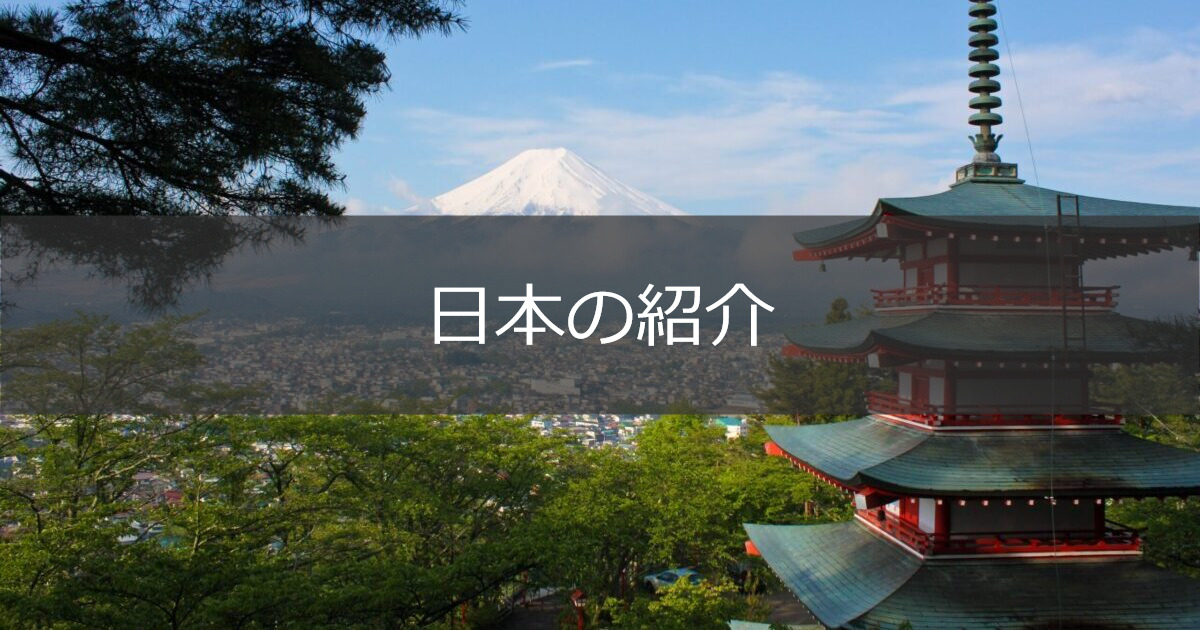「秋、冬の季節行事の紹介」 英語例文、英語表現
英文メールで日本の季節行事の紹介「秋、冬の季節行事の紹介」の場面で使える英語表現(英語例文)となります。
英:The custom enjoying the moon is called Tsukimi.
日:月を見て楽しむ習慣は”お月見”と呼ばれています。
英:The third Monday of September is Respect for the Aged Day in Japan.
日:日本において、9月の第3月曜は「敬老の日」です。
英:The end of the year is coming up, we will do a major housecleaning.
日:年末が近づいてきたので、我々は家の大掃除をします。
英:For a long time, Japanese people eat toshikoshi noodles on New Year’s Eve.
日:昔から、日本人は大晦日に年越しそばを食べます。
英:On December 31, the sound of bells on New Year’s Eve resounds through a town.
日:12月31日になると、除夜の鐘の音が町に響き渡る。
英:Recently, the opportunity to see mochi pounding in the New year has decreased.
日:最近は、新年に餅つきを見る機会が減ってきたように感じる。
英:Many people visit shrines to pray for happiness and a healthy year in the New year.
日:新年には多くの人々が1年の健康と幸福を祈りに神社に詣でます。
英:Receiving New Year’s gifts of money may be one of the happiest events for children.
日:新年にお年玉を受け取ることは、子どもたちにとって最も楽しいイベントの1つでしょうね。
英:Shichi-Go-San is an event to thank the gods and celebrate the safe growth of children at the age of 7, 5, and 3.
日:七五三とは、7歳・5歳・3歳の節目に子どもが無事成長したことを神に感謝し、祝う行事です。
英:At coming-of-age ceremony, women dressed in kimono are really beautiful.
日:成人式におてて、着物を着た女性は本当に美しいですよ。
英:Some people eat Kentucky Fried Chicken instead of turkey on Christmas in Japan.
日:日本のクリスマスには七面鳥の代わりにケンタッキーフライドチキンを食べる人がいます。
英:In recent years, Halloween parties are held in Japan. Costumed young people enjoy Halloween in large cities.
日:近年、日本でもハロウィンパーティーが開催されます。コスプレした若者達が大きな都市でハロウィンを楽しみます。
「秋、冬の季節行事の紹介」 サンプル英語メール
日本の季節行事の紹介「秋、冬の季節行事の紹介」のサンプル英語メールとなります。
<サンプル英語メール>
Hi Sebastian,
It’s getting close to the end of 2012. New Year’s Eve has a meaning important for a Japanese.
On December 31, the sound of bells on New Year’s Eve resounds through a town. When I hear this sound, I would like to come to eat buckwheat noodles. For a long time, Japanese people eat toshikoshi noodles on New Year’s Eve.
Best,
Manabu Eigo
<日本語訳>
やあ、セバスチャン。
2012年も残りわずかになってきました。 大晦日は日本人にとって重要な意味を持ちます。
12月31日になると、除夜の鐘の音が町に響き渡る。 この音を聞くと、私は蕎麦を食べたくなります。 昔から、日本人は大晦日に年越しそばを食べるのですよ。
英語 学
<サンプル英語メール>
Hello Simon,
Receiving New Year’s gifts of money may be one of the happiest events for children. Of course I’m going to give my son New Year’s money next year.
He is looking forward to it.
Well,you have a lot of relatives’ children,don’t you? You will have too much money going out.
Best,
Manabu Eigo
<日本語訳>
こんにちは、シモン。
新年にお年玉を受け取ることは、子どもたちにとって最も楽しいイベントの1つでしょうね。
もちろん私は息子にお年玉をあげますよ。 彼も楽しみにしていますからね。
そうだ、あなたは親戚の子供がたくさんいましたよね? 出費がかさみますね。
英語 学
<サンプル英語メール>
Hello there,
I hope you’re doing well! I wanted to talk to you about Christmas in Japan. It’s a bit different from how it’s celebrated in other countries, so I thought you might find it interesting.
In Japan, Christmas isn’t as big of a holiday as it is in other countries. It’s more of a time for couples to exchange gifts and spend time together, rather than a religious holiday. However, Christmas Eve is becoming more popular in Japan, and people often go out for dinner or exchange gifts on that day.
One interesting thing about Christmas in Japan is that many people eat Kentucky Fried Chicken instead of a traditional holiday meal. KFC has been running a successful “Christmas bucket” campaign in Japan for decades, and it’s become a popular way for people to celebrate the holiday.
I hope this gives you a little bit of insight into how Christmas is celebrated in Japan. It’s a fun and unique way to celebrate the holiday!
Best,
Manabu Eigo
<日本語訳>
こんにちは、シモン。
元気でやってるかなー?日本のクリスマスについて話したいと思います。他の国での祝い方とは少し違うので、興味を持ってもらえるかと思います。
日本では、クリスマスは他の国ほど大きな祝日ではありません。宗教的な祝日というよりは、カップルでプレゼントを交換したり、一緒に過ごしたりする時期なのです。しかし、日本ではクリスマスイブが一般的になりつつあり、この日に食事に出かけたり、プレゼントを交換したりすることが多いようです。
日本のクリスマスで面白いのは、伝統的なクリスマスの食事ではなく、ケンタッキーフライドチキンを食べる人が多いことです。KFCは何十年も前から日本で「クリスマス・バケット」というキャンペーンを展開し、成功を収めてきました。
日本でクリスマスがどのように祝われているのか、少しはわかっていただけたでしょうか。楽しくてユニークなクリスマスの祝い方ですね。
英語 学
<サンプル英語メール>
Hello Hazel,
I wanted to tell you about a special tradition in Japan called Shichi-Go-San. It’s a celebration for children aged 3, 5, and 7, and it’s held every year on November 15th.
During Shichi-Go-San, children dress up in traditional Japanese clothing and visit a shrine or temple with their families. They pray for good health and good fortune, and they also receive small gifts and treats.
One of the most iconic parts of Shichi-Go-San is the kimono. Many children wear beautiful kimonos with intricate designs, and it’s a really special and memorable experience for them.
I hope you’ll consider learning more about Shichi-Go-San and other traditional Japanese celebrations. They’re a really interesting and unique part of Japanese culture.
Best,
Manabu Eigo
<日本語訳>
こんにちは、ヘイゼル。
日本には「七五三」という特別な習慣があることをお伝えしたいと思います。3歳、5歳、7歳の子どもたちのためのお祝いで、毎年11月15日に行われるんだ。
七五三では、子どもたちは日本の伝統的な衣装に身を包み、家族とともに神社やお寺にお参りします。無病息災や開運を祈り、ささやかなプレゼントやお菓子をもらうのです。
七五三で最も象徴的なもののひとつが、着物です。多くの子どもたちは、複雑なデザインの美しい着物を着て、本当に特別で思い出に残る体験をします。
皆さんも、七五三をはじめ、日本の伝統的なお祝い事について、もっと知ってみてはいかがでしょうか。日本の文化の中で、とても興味深く、ユニークな部分なのです。
英語 学


